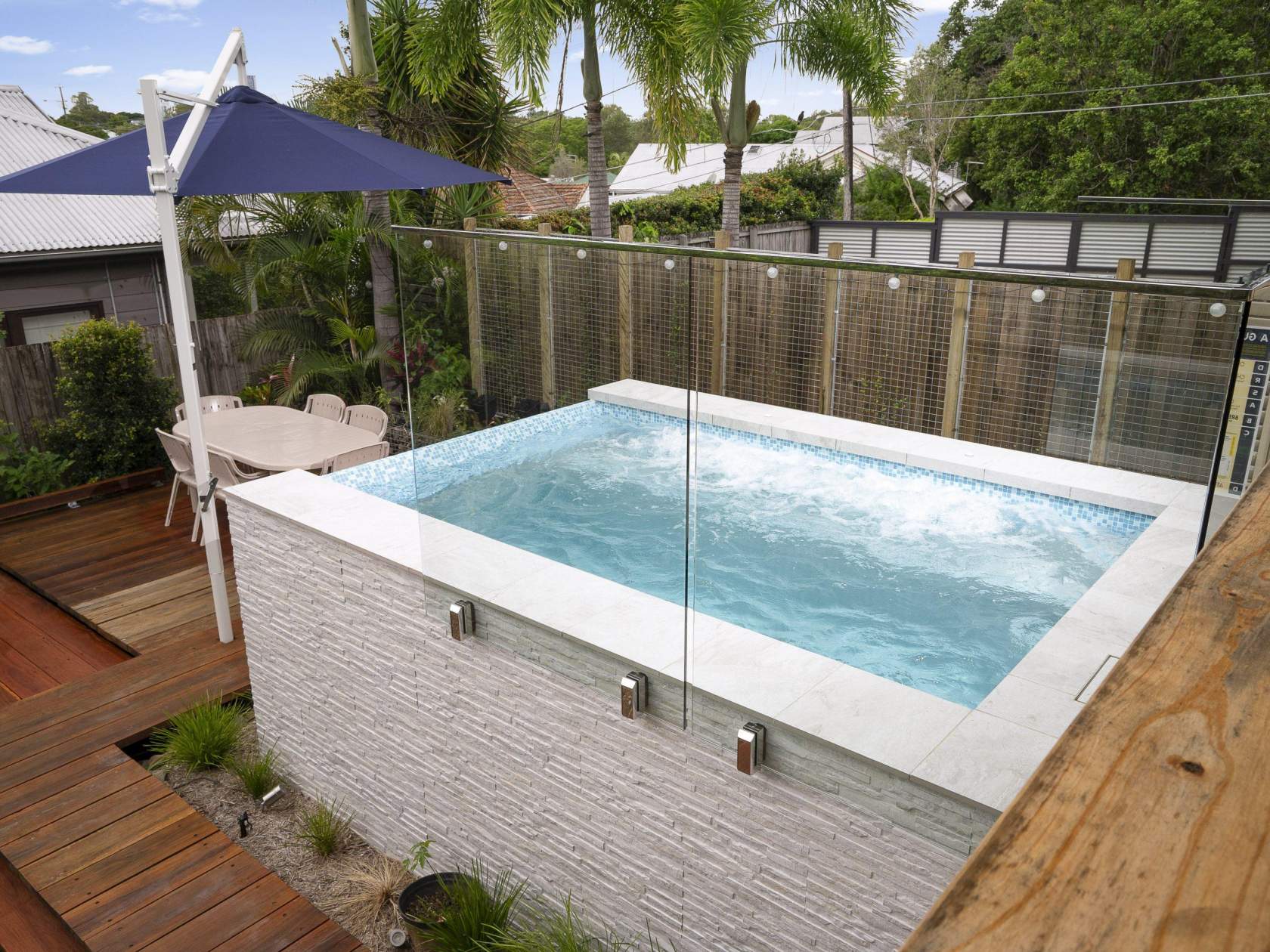

Fibreglass vs. Vinyl Pool vs. Concrete Pool: Pros & Cons
Building a pool in your home is a big decision, and the process thereafter is made up of lots of little decisions as well. Things like the size, shape, depth, equipment, and landscaping around the pool are all key factors that go into making a great aquatic space. But one of the most important choices by far is the material you choose to construct your pool out of. That choice, in particular, is going to affect a variety of things both during the building process and in the years after completion. Things like cost, maintenance, time/effort, usability and a variety of others. So it pays to look into the different merits of each material and decide which one is going to suit you best.
The three most common types of pools that you'll find are made with fibreglass, vinyl and concrete. And before you read any further, you should know that there really isn't one clear winner across all categories. Your priorities will be the main thing that dictates which is best for your property. So let's get into it.
Cost
Rather than just give you another article that blandly lists the standard pros and cons of each material, let's start with the factor that impacts people's choices the most: cost. It's no secret that building a pool requires some serious investment, but the rewards to your lifestyle and home value are worth it.
For the cost-conscious buyer, the pool material is where you'll be able to save the most cash. So if that's your flavour, then you'll want to check out vinyl pools. The reasons for this are quite simple. They're quick to install, require relatively few materials and can be cut to shape straight from a roll. There are additional costs that may await you regarding maintenance, but we'll get to those later.
The next on the cost scale is fibreglass. Fibreglass pools are cast in a large mould and can then be delivered to your home. The price of digging, purchasing and installing a fibreglass pool can cost you somewhere in the region of 30-100 thousand dollars. Offsetting this is the fact that fibreglass tends to cost very little in future maintenance costs.
The most expensive material is concrete. Concrete pools can range from $30,000 all the way into the six-figure region. It really depends largely on your preferences for the design and inclusions. But the good news is you can get a solid baseline for pricing by finding out what a pool installer's price is. This is the price they would roughly charge on a per square metre basis and will help to indicate the final price. While concrete comes in as the most expensive material here, you'll see that it also tends to perform quite highly in other categories as a result.
Durability and Maintenance
Pools are meant to be a long-term investment, so it makes sense that you'll want one that lasts the test of time. While it is true that all three options, when properly installed, can and likely will last for many years – some are far more durable than others.
Starting with the most durable, we have concrete. This material is highly resistant to the trials of weather and consistent usage; and will last for decades. But that's not without some added maintenance along the way. It is often said that concrete has the highest 'lifetime-cost' of all the materials. This is because at some stage a concrete resurfacing may be required in order to retain the pool’s original look. But this is very sporadic and still leaves concrete as the most durable of all the materials.
Next is fibreglass. Fibreglass is a great material from a durability and maintenance perspective. It's a strong enough material to resist most knocks and dings to its surface, while being smooth enough to require nothing more than a wipedown in order to clean it. Over the years, fibreglass pools have been known to fade, but this is an expected part of the process and can simply be restored when the need arises. Most fibreglass pools won't require this treatment for a good 10-15 years.
Last in this ranking is vinyl pools. Vinyl has caught a bit of a bad rap for its lack of durability, and although it isn't entirely undeserved – vinyl pools are still more durable than they are sometimes given credit for. Particularly for inground vinyl pools, the coating used is thicker than the norm and can last for 12-20 years in some cases. This is for premium quality liners though, and thinner or lower quality liners may need replacing every 5-7 years. So while you can save money by going with vinyl, it's worth putting some investment into a decent liner to ensure its longevity.
Customisation
Next up is customisation. If you're so inclined, installing a pool can be an incredible feature of your backyard, and sometimes a highly customisable option is the best way to achieve this. But in other cases, a simple 'off the shelf' solution is perfectly adequate.
When it comes to customisation, concrete and vinyl-lined pools are hard to separate. Both materials allow for any combination of shapes and sizes and can be made to your exact specifications.
Concrete and vinyl pools both allow for a vast amount of choice regarding colours and finishes, although the tiling options around concrete possibly make it slightly more customisable in that regard.
One more point in favour of concrete is that when building a reinforced concrete pool, the topography of your block is largely irrelevant. Pool professionals are able to build reinforced concrete pools basically anywhere. This isn't the case for vinyl pools, as they require quite friendly topographic conditions to be considered a safe choice.
Fibreglass isn't really customisable due to the way in which it's constructed. By coming from a mould, the pool has to be one piece, and that piece can only be shaped like the mould in which it was made.
Build Time
Another big factor in deciding your pool material will be the amount of time it'll take to build. Are you patient? Or are you hoping to be lounging on the water within 5-6 weeks? The material you choose will go a long way towards deciding this.
Fibreglass pools are the main winner in this category. If you know the size and shape you want, your pool can be ready for use within 3-4 weeks. The mould is simply placed into the hole, supporting equipment is attached, and the pool is filled with water – presto! You have a pool.
Vinyl pools fall somewhere between concrete and fibreglass in terms of build time. If ground conditions are favourable and there are no other complications (eg, pipework), vinyl pools can be dug out and installed very quickly. Sometimes the actual installation time itself takes less than a day. It only comes behind fibreglass due to the need for customised shapes and cuts to be made.
Concrete pools are unsurprisingly last in this category. While they can be constructed to your exact specifications, these builds almost always take months to complete due to all of the extra labour involved. This labour includes excavation, waterproofing and tiling, which all add up to create a build time of around 6-8 weeks, but can stretch a lot longer than that as well.
Hopefully this article has helped to outline some of the key strengths and weaknesses of each material for you. When you do decide on your chosen material, you'll find a comprehensive list of pool installation professionals on our website. Happy building!
